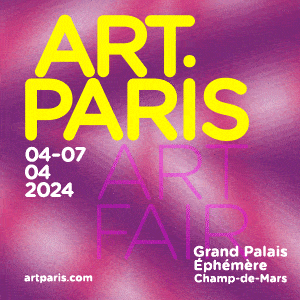Whitehot Magazine
April 2024
"The Best Art In The World"
"The Best Art In The World"
April 2024
January 2010, Seb Patane @ Maureen Paley
 Seb Patane, Carpathian Walk, 2009
Seb Patane, Carpathian Walk, 2009
ballpoint pen, enamel, leather and colour pencil on printed paper
67 x 102 cm - 26 3/8 x 40 1/8 inches
Seb Patane
Maureen Paley
21 Herald Street
London E2 6JT
November 28, 2009 through January 17, 2010
A “bullet with your name on it” is a soldier’s grim concept of destiny; similarly, the placement of cards in a Tarot reading suggests a predetermined course of events. Using soldiers and Tarot cards as subjects, Seb Patane explores the concept of destiny and how it may be linked to archetypal roles, highlighting the cyclical nature of this relationship.
Found images lie at the nucleus of Patane’s practice, and his show at Maureen Paley is no exception. A selection of historical and political images of uniformed men forming the basis of the works on the main floor of the gallery. Patane gives found images a second chance - a chance not to be overlooked, thereby altering their fate. These found images of soldiers each form parts of larger compositions, which, in Patane’s characteristic style, have specific areas concealed by a combination of obsessively scribbled biro ink and meticulously painted forms.
Patane’s systematic disruption of familiar images breathes new life into them. Obscuring the individuality of the subjects by concealing their eyes - and sometimes faces - gives way to a consideration of the archetypal roles of these soldiers. With sentimental titles, such as Carpathian Walk and A New Winter Plan, these works encourage the viewer to consider alternative, fictional narratives, reminding one that history is subjective. Subtle aspects allude to the fraught political content of the works. For example, Glorious Fellows! November 1915, 1969, 2009 recalls the start of fascism (1915), and the height of student uprisings and the ‘Strategy of Tension’ in Italy (Patane’s home country) when the government worked with fascist groups to commit acts of terror against its own citizens (1969). One wonders what Patane might be alluding to by incorporating 2009 in the title. Are we stuck in a vicious circle? Does history repeat itself?

Seb Patane, Chariot, Fool, Emperor, Force (video production still)
, 2009
video projection, sound, wooden bench

In the upstairs gallery, Patane continues to consider such issues. Calling free will into question, he merges concepts of destiny and the fulfilment of archetypal roles. Chariot, Fool, Emperor, Force is part film and a part staged documentation of a performance by Frontier, Frontier! (Patane’s music project with musician Giancarlo Trimarchi.) It refers to Tarot cards - specifically, the work of Alejandro Jodorowski, whose research into the subject spans fifteen years and has become an interdisciplinary project. Of crucial interest to Patane is Jodorowski’s writing, from which Patane has derived an interest in the ‘iconography of concealment and the formation of archetypal roles,’ alluded to through his use of biro markings, masks and selection of subjects.
Chariot, Fool, Emperor, Force explores the performative nature of identity, as four archetypal characters from the Tarot card deck are represented through a combination of performance and music. One-by-one, the masked characters enter the stark room and luxuriate for several minutes in their individual soundtracks, seemingly selected by the two masked DJ’s (Frontier, Frontier!) at the rear of the film set, before taking a seat on a long table, alongside the other characters. Using rudimentary objects such as boxes, yarn and netting to construct masks for these characters, Patane reveals the simplistic way in which identity can be constructed, particularly when combined with the individualised soundtracks. Patane often employs sound in his work - he appreciates it as an anarchic ‘material,’ for its ability to become an intangible, yet inescapable part of the ‘viewing’ process. Chariot, Fool, Emperor, Force uses sound to casually implicate the viewer as a performer. Entering the room, one is confronted by a table containing four sets of earphones. The viewer selects a pair and the loud, rhythmic beats of the soundtrack begin to pump through one’s ears. As each character enters the set and takes his seat at the table, the viewer becomes aware that they have pre-selected a pairing with one of the characters. Although the same soundtrack plays on all of the earphones, each character has a ‘position’ at the table, and one’s earphone selection will have a predetermined identification with the character of ‘Chariot’, ‘Fool’, ‘Emperor’ or ‘Force.’ Patane here seems to mocking the limits of one’s free will, as one realises he or she has been implicated by Patane as a performer in this work rather than a viewer, implying that one’s archetypal role, both as performer and, further, as one of the specific characters, was predetermined by Patane.
Patane’s show at Maureen Paley offers a fresh look at the construction of identity. He considers the roles of fate, free will and fictional narrative using found objects and rudimentary materials to construct sophisticated compositions whose rhythms, patterns and subjects harmonise, leaving one to wonder how Patane mysteriously got the upper hand.

Claire Shea
Claire Shea is currently Curator at the Cass Sculpture Foundation in Goodwood, West Sussex, who is based in London. She previously worked as the Internship Coordinator for the Peggy Guggenheim Collection in Venice, Italy following a Master’s Degree in Modern and Contemporary Art at Christie’s Education in London.








